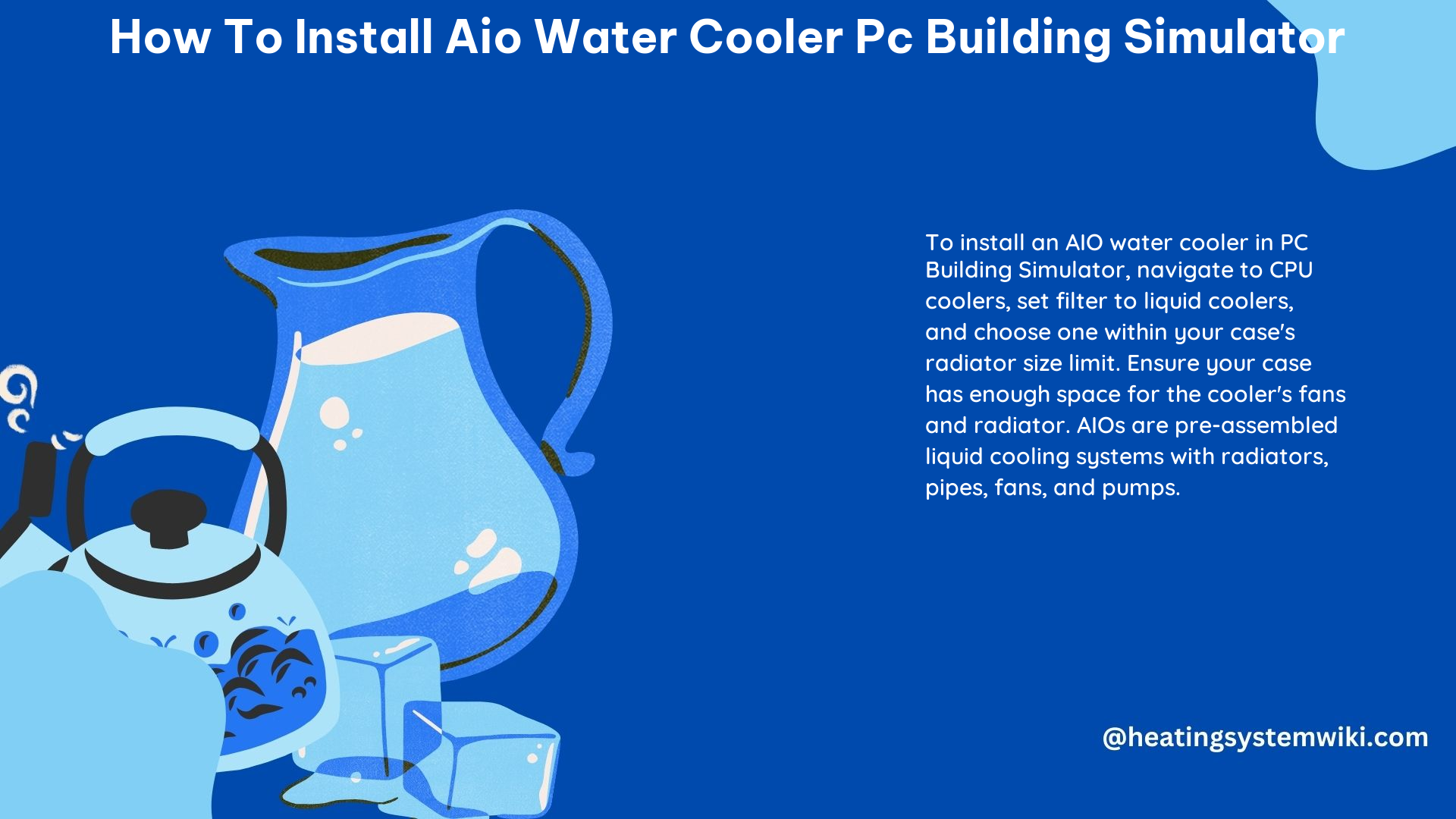In the world of PC building, the integration of an AIO (All-in-One) water cooler can significantly enhance the system’s performance and aesthetics. PC Building Simulator, a popular game that simulates the process of building and customizing a personal computer, offers players the opportunity to explore the installation of these advanced cooling solutions. This comprehensive guide will walk you through the step-by-step process of installing an AIO water cooler in PC Building Simulator, providing you with the technical details and best practices to ensure a successful and efficient setup.
Selecting the Appropriate AIO Water Cooler
The first step in the installation process is to select the right AIO water cooler for your system. In PC Building Simulator, you can navigate to the CPU coolers section and set the filter to liquid coolers. When choosing an AIO, it’s crucial to ensure that the selected cooler fits within the case’s radiator size limit. As a general rule, it’s recommended to choose a cooler one size smaller than the case limit to account for potential accommodation issues in some cases.
Verifying Case Specifications

Before proceeding with the installation, it’s essential to verify the case’s specifications to ensure the radiator size is compatible. In PC Building Simulator, some cases may support different radiator sizes, such as 140mm, 280mm, or 420mm. It’s important to note that a case with 360mm support may not necessarily fit a 280mm AIO, as the fan sizes differ (120mm and 140mm, respectively). If the case specifically mentions 140, 280, or 420mm, only coolers with 140mm fans will be compatible.
Step-by-Step Installation Process
-
Remove the Existing CPU Cooler: Begin by removing the existing CPU cooler from your system and thoroughly cleaning the thermal paste off the CPU.
-
Apply New Thermal Paste: Apply a new layer of high-quality thermal paste on the CPU surface, ensuring even coverage.
-
Mount the AIO Water Cooler: Carefully place the AIO water cooler’s CPU block on the CPU, aligning it properly and securing the mounting mechanism according to the manufacturer’s instructions.
-
Connect the AIO Fans: Connect the AIO’s fans to the motherboard’s fan headers or the AIO’s fan controller, if available. This will ensure proper control and monitoring of the fan speeds.
-
Route the AIO Tubing: Carefully route the AIO’s tubing to avoid any kinks or sharp bends. Secure the tubing using cable ties or clips to maintain a clean and organized layout.
-
Fill the AIO (if Customizable): If the AIO water cooler is a customizable model, fill the system with the recommended coolant according to the manufacturer’s guidelines.
-
Power On and Verify Operation: Power on the system and ensure that the AIO water cooler and its fans are functioning correctly. Monitor the temperatures and performance to ensure the cooling solution is working as intended.
Technical Specifications
To further enhance your understanding of AIO water coolers, let’s dive into the technical specifications:
| Specification | Range |
|---|---|
| Radiator Size | 120mm, 240mm, 280mm, 360mm |
| Fan Size | 120mm, 140mm (some high-end models use 200mm or larger) |
| Fan Speed | 500 to 2,000 RPM |
| Noise Level | 20 to 40 dB |
| Coolant Capacity (Customizable) | 200 to 500 ml |
It’s important to note that the specific installation process may vary depending on the AIO model, case design, and other system components. Always refer to the manufacturer’s instructions for the most accurate and up-to-date information.
References
- Install AIO Water Cooling – Pc Building Simulator Gameplay #29
- What is AIO water cooling and how do I install it
- PC Building Simulator | #04 | Level 20 | AIO Liquid Cooling
- Custom Water-Cooling Tutorial | PC Building Simulator
By following the steps outlined in this guide and considering the technical specifications, you’ll be well on your way to successfully installing an AIO water cooler in PC Building Simulator, enhancing your system’s performance and cooling capabilities.
